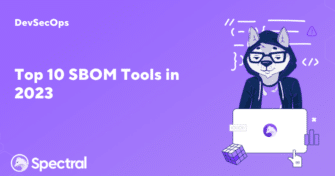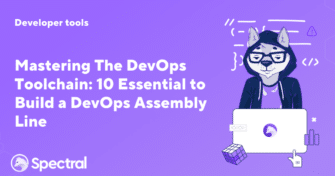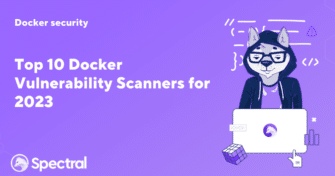Top 10 SBOM Tools in 2023
Imagine this: you’re a developer working on a critical software application that thousands of people use daily. You’ve spent countless hours writing and testing code and
Netz lets you run internet-wide misconfigurations research easily and continuously. It supports infrastructure-as-code so you can put your plan in a config file, run the CLI, and get results. Netz also contains some more advanced features like making the scan BLAZING fast by using the PF_RING ZC (Zero Copy) kernel module.

What Netz gives you:
Since Netz is open sourced you can jump into it and make it even better!
In this post, you will find the macro and the micro of internet misconfigurations problem, and you will learn how Netz helped us understand the problem landscape as one of our research tools @ SpectralOps.
Now that Netz is open source— you can conduct such research as well!
The quickest way to detect a network asset that is publicly exposed to the internet is to use one of search engine services like Shodan, Censys or Zoomeye, and use the query language to see wide internet components. If you would like to do it manually instead of using an online service, or if you want to do a scan on internal networks, there are multiple ways to do it. The different types of scanning are between a small network or a big network, where a big network can scale up to the whole internet.
For scanning on a small scale, you can use the popular command nmap (which is available in the most advanced penetration testing distribution OS — kali). For larger-scale networks, the most popular are ZMap and masscan.
If you try to scan the whole internet with ZMap or masscan from your own computer, and you are curious about the results and can’t leave the computer, you should settle in because it’s going to take weeks. Why? Because those tools are aggressive by design to be able to scan the whole internet in a minimum of time. You could control the bandwidth capacity those tools are using and decrease it to be less aggressive, but then you will need to spend even longer at your computer.
To shorten the wait, you can use a public cloud machine, but even then, the NIC (network interface controller) on a basic machine is limited for PPS (packets per second).
So what can you do? You can use a stronger machine with a stronger NIC and much more PPS. It will be much faster but even that could take hours to days. If you want to conduct many tests in minimum time, even the strongest machine with the best NIC type is limited.
We can use 2 different approaches to split the workload:
If you would like to do more than just know what the open ports are and the metadata, and you want to do applicative actions against those ports while you scan, you need an application scanner. One of the most popular is ZGrab2.
So here is the execution plan workflow we want to achieve:
Here are a few examples for application security scanning:
ZGrab2 is pluggable, so you can just write one small function in Golang to easily extend the tool abilities to fit your needs.

Most companies in the world today use different 3rd party SAAS, PAAS, and IAAS. On top of those “As-A-Service” solutions are data-pipelines tools; data-science frameworks; different open-source projects; and DevOps infrastructure & observability tools.
All these solutions use different configuration & secrets/credentials, including database connection strings; API keys; asymmetric keys; tokens; username/password combinations; admin, security, privacy settings; and much much more.
Even the infrastructure today is controlled by code, which contains a lot of config types, and with it — more complexity. In some organizations, the complexity is even higher with multiple infrastructures in multiple public cloud vendors.
With all these cutting-edge technologies allowing us to move faster we must stop to consider: how do you make sure all of your company assets are secured?
It’s easy to understand how misconfigurations or mishandling of any critical part of the supply chain could lead to a breach. The size of the mistakes is disproportionate to the damage, with one small mishap potentially costing a company millions of dollars in the “best case”. Worse cases can mean the end of a business.
Netz in Hebrew means Hawk – a predator that can scan the ground for meals from miles up in the sky, and then dive in to catch it. This is an analogy for the way malefactors act in the digital world: they seek out vulnerabilities on the whole internet from miles away, then dive in for the kill.
Second, the name contains Net (which is the network scanning part), and Z – the most critical type of security issue – Zero-day attacks.

We strive to make the world a better and safer place. If you intend to use this information to cause harm, you are doing the opposite, and at your own risk.

Imagine this: you’re a developer working on a critical software application that thousands of people use daily. You’ve spent countless hours writing and testing code and

DevOps is more than just a buzzword and the dev behind the magic is more than just a tech wizard who orchestrates software delivery single-handedly. Behind

Docker has revolutionized how developers work by offering a powerful platform for creating, shipping, and running container applications. It helps developers conquer the complexity of application